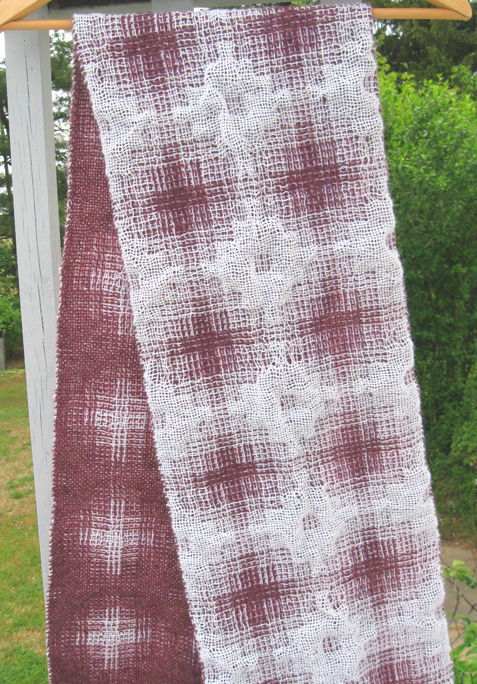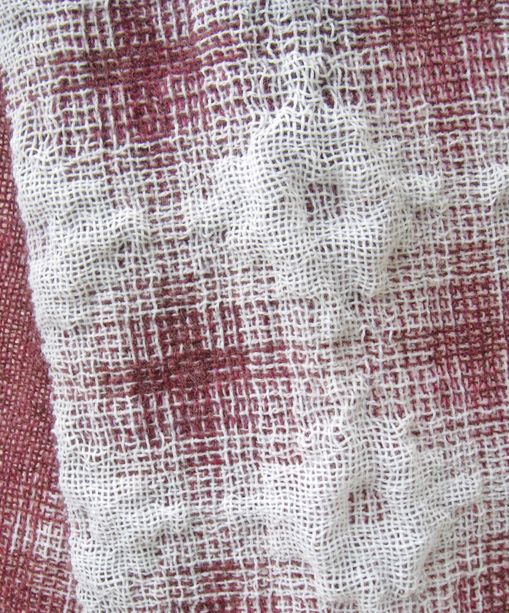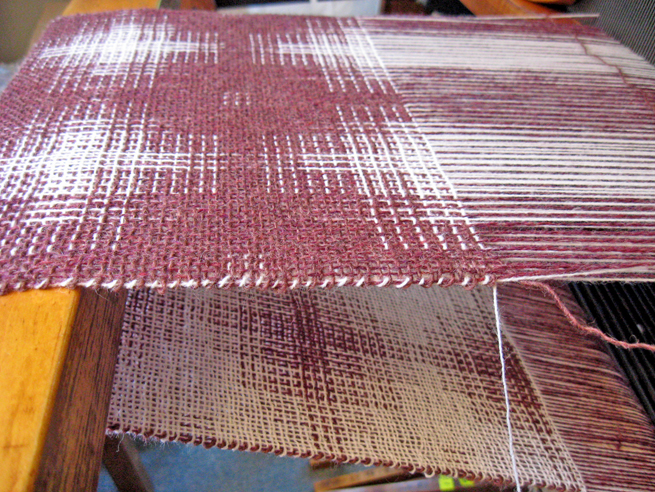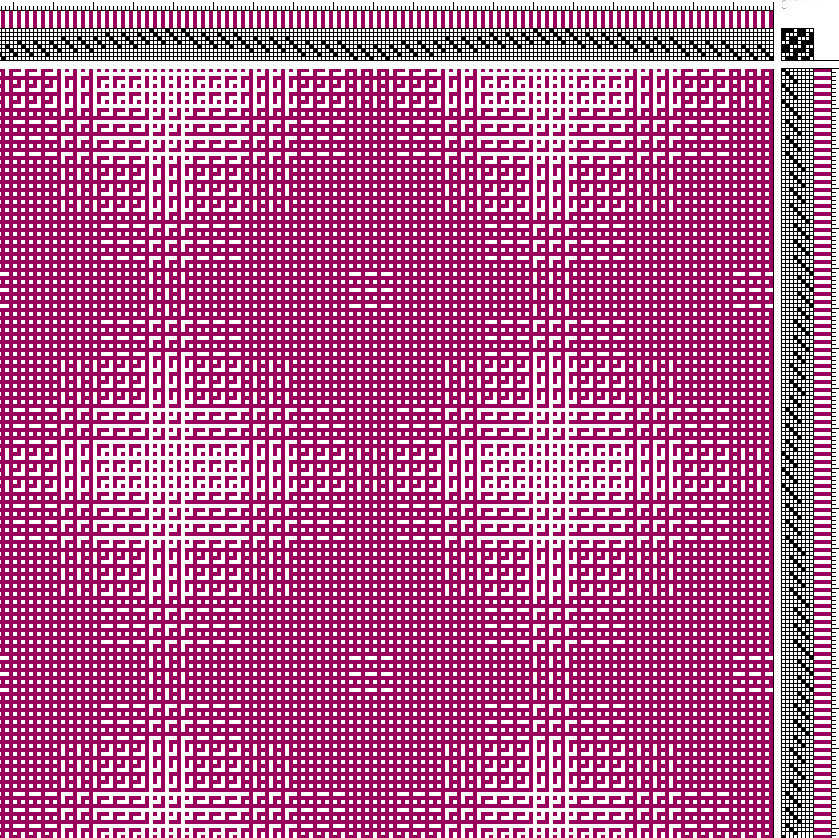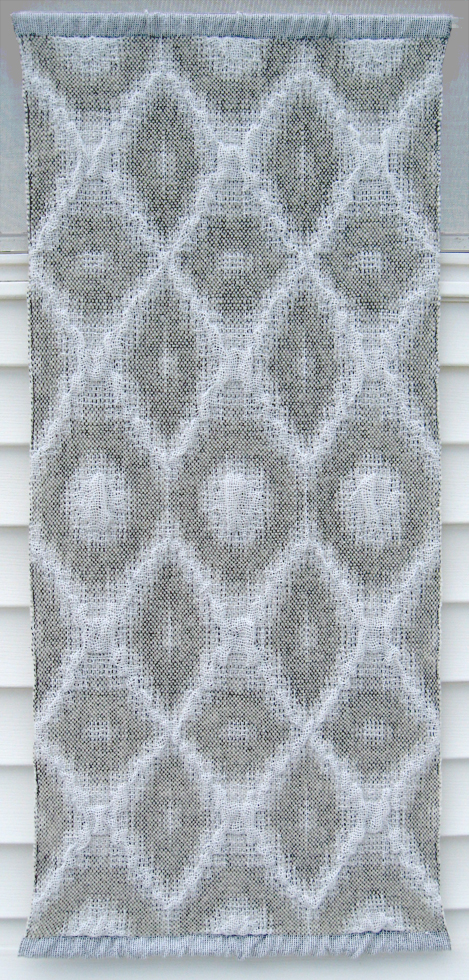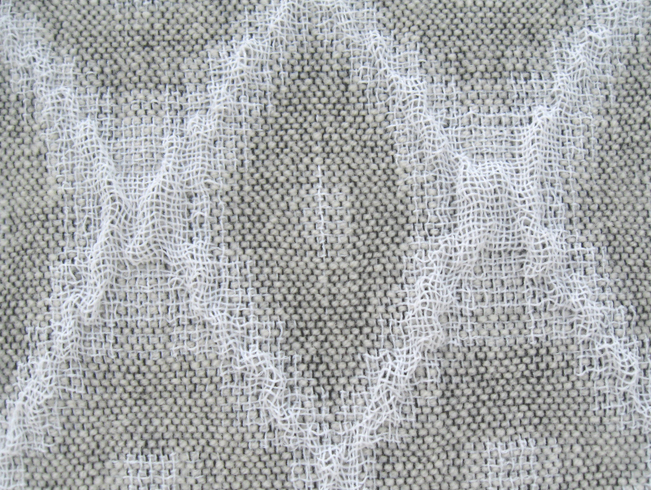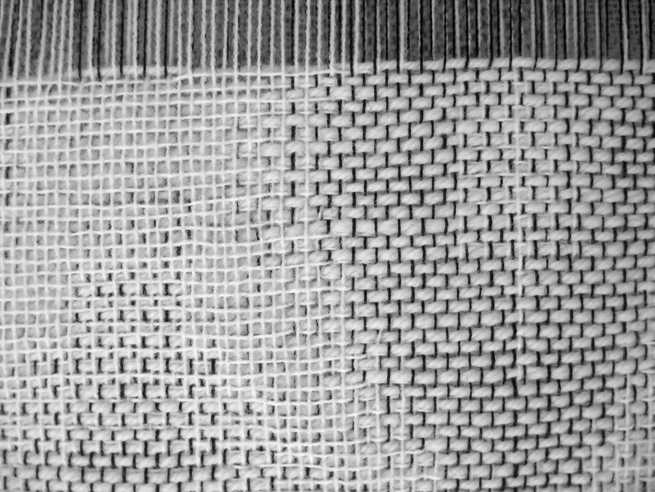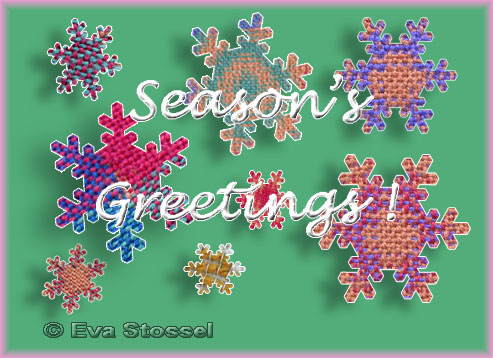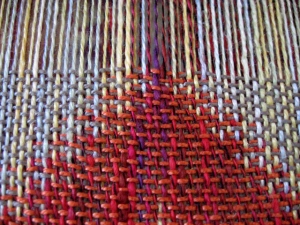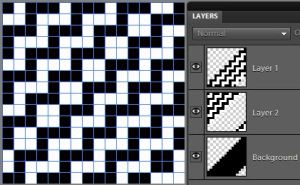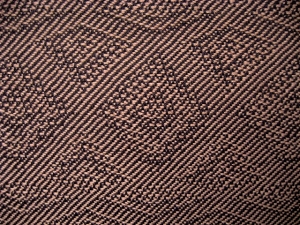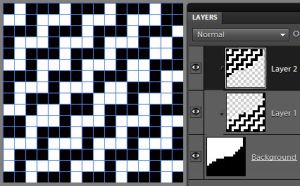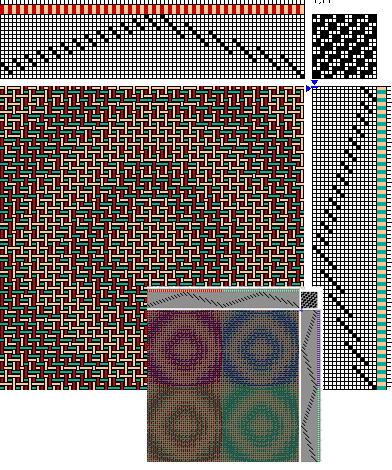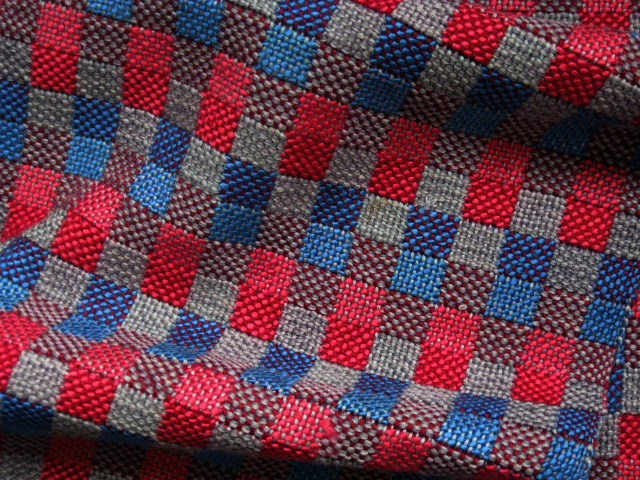Of the many ways of designing and weaving double weave, my favorite is loom-controlled, patterned double weave. On my 16-shaft treadle loom I can weave up to 4 blocks of plain weave as well as network drafted double weave designs. I have written several posts on this topic and thought it was time for another visit because it really is so much fun!
In this post I share photos, drafts and notes about my recent projects that include a 16-shaft, 4-block double weave table runner and a couple of 8-shaft, 2-block placemats. I also share a photo of a double weave Tencel shawl that I plan on submitting to my guild’s annual exhibit in April.
Double Weave Table Runner – 16 shafts
The first project is a table runner I wove using 5/2 pearl cotton with a sett of 28 e.p.i. that turned out to have a fairly good but not perfectly balanced weave. I happen to like it this way, but a wider sett of 24-26 e.p.i. would have helped make the rectangular areas be more square. After twisting the fringes, I washed it by hand, spin dried in the washer but I could have rolled it in a towel too, laid flat to dry and steam ironed while it was still a bit damp. Here it is:

Double Weave Table Runner, Pearl Cotton, 2014
As part of the preparation for this project I wove a small plain weave sample to see how the colors mix with each other:

Prep for Double Weave Table Runner – yarns, warp, and sample
The design started out with a profile draft that is a variation of the same profile draft I designed for the Turned Twill Table Runner that I wrote about in my previous post. It’s a 4-block profile draft to be woven on 16 shafts:

PROFILE DRAFT for Double Weave Table Runner (4 blocks to be woven on 16 shafts)
With the magic of block substitution, my weaving software (Fiberworks PCW) generated the complete drawdown. You can do this manually as well (it’s still magical!) by looking at the profile draft and substituting the following for each block: first block is threaded and treadled 1, 2, 3, 4; second block 5, 6, 7, 8; third block 9, 10 ,11, 12; and fourth block 13, 14, 15, 16. I then experimented with different colors and came up with a color scheme I liked, choosing colors that I had in 5/2 pearl cotton in my stash. Below are different views of the thread-by thread draft. The double weave view shows how each side actually appears, one side appears different than the other side. The close-up interlacement view shows how the warp and weft interlace or cross each other and gives you a hint that there are 2 layers with areas in one layer exchanging places with areas in the other layer:

Draft for double weave table runner (double weave view, side 1)

Draft for double weave table runner (double weave view, side 2)
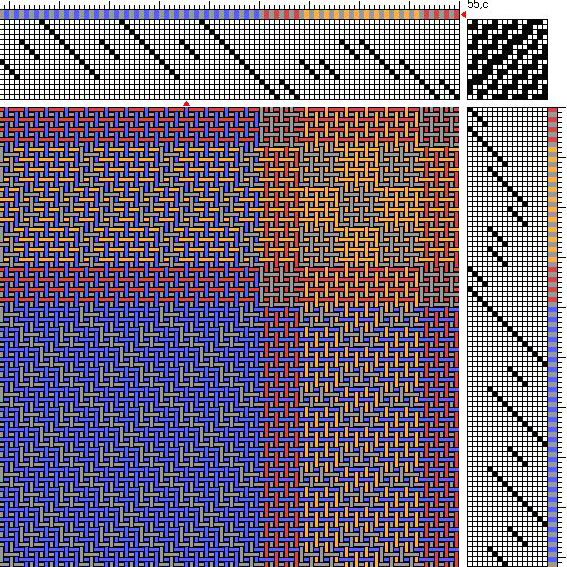
Draft for double weave table runner (close-up of one section, interlacement view, side 1)
UPDATE 2017: Bianca Geiselhart used my draft to weave two lovely placemats. She sent me this beautiful photo and gave me pemission to post it here:

Bianca Geiselhart’s Double Weave Placemats, 2017
Double Weave Placemats – 8 shafts
The second project is a couple of placemats I wove using 20/2 unmercerized cotton, 2 strands used together as one, with a sett of 40 e.p.i. I wove a few inches of basket/plain weave with the 20/2 cotton used singly in between mats to be turned and hand sewn as hems for a neat finish after the wet finishing process which was the same as that for the table runner. Here’s how the placemats turned out:

Double Weave Placemats, Cotton, 2014
The design for the placemats also started out with a profile draft, but this time with only 2 blocks to be woven on 8 shafts:

PROFILE DRAFT for Double Weave Placemats (2 blocks to be woven on 8 shafts)
As before, block substitution generated the complete drawdown, the first block is threaded and treadled 1, 2, 3, 4 and the second block 5, 6, 7, 8. Since this pattern looks so busy I decided to use only 2 colors to make it appear simpler and to highlight the balance between the dark and light areas. Below is the thread-by-thread draft in double weave view of one side. I didn’t show the other side because it looks the same except that the dark and light areas are interchanged. The close-up of one section of the draft in interlacement view also shows the basket/plain weave I mentioned earlier that I used to weave for the hems on the placemats. As you can see in the tie-up you need two extra treadles to do this.

Draft for Double Weave Placemats (double weave view)

Draft for Double Weave Placemats (close-up of one section, interlacement view with basket weave for the hem)
A Challenge
OK, I asked myself, what now? How about challenging myself to weave something interesting in double weave to enter in my guild’s show in March? After experimenting with many drafts, I came up with a 16-shaft networked draft for double weave that looks like mosaic when viewed from a distance and also looks interesting when viewed close-up. I liked the design and wove this Tencel shawl:

Double Weave Mosaic Shawl, Tencel, 2014
UPDATE March 31, 2014: This shawl received “The Kathryn Wellman Memorial Award” for imaginative weaving incorporating design, color and texture at the 2014 Philadelphia Guild of Handweavers “Celebration of Fibers” exhibit.
Now it’s time to start thinking about the next challenge…see you next time!
